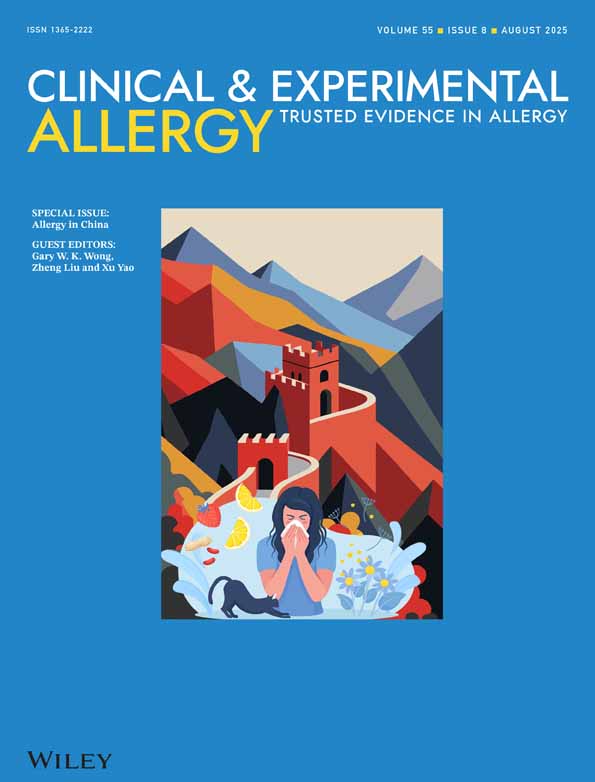Dual skin test reactions and serum antibodies to subtilisin and Aspergillus fumigatus extracts
Summary
Thirteen patients with an allergy to subtilisin were prick-tested with a solution of crystalline subtilisin A at 0·1 and 1 mg/ml, and the cutaneous reactions were noted.
Sera were examined by radioimmunoassay for IgE antibodies, double-binding antibodies—which seemed to be mainly IgG—and precipitins to subtilisin.
Sera from two subtilisin-tested patients showing immediate and late skin reactions and sera from two patients with allergic aspergillosis were chromatographed on Sephadex G-200, and IgE and IgG antibody peaks were collected and concentrated.
Passive sensitization of skin sites of healthy volunteers was performed with these sera and with IgE and IgG antibody fractions. The skin sites were challenged after 4 hr, 24 hr and 4–6 days.
All thirteen sublilisin-tested patients gave immediate skin responses, which in six patients developed into an oedematous late reaction. Patients with late skin reactions had higher serum levels of IgE antibodies to subtilisin. No correlation was found between the occurrence of late skin reactions and double-binding antibodies. No precipitins were found.
Both immediate and late skin test reactions were seen in skin sites passively sensitized with serum and IgE fractions. Histological examination of the skin with late reactions showed oedema and perivascular infiltration of mononuclear cells, and some eosinophils. Oral administration of prednisolone, 30 mg/day, inhibited the late skin test reaction to passive sensitization with three sera.
The observed late skin reactions seemed to be [gE-mediated and appeared to be dependent on a high level of specific IgE antibodies in the patient's sera or in the solutions used for passive sensitization.




